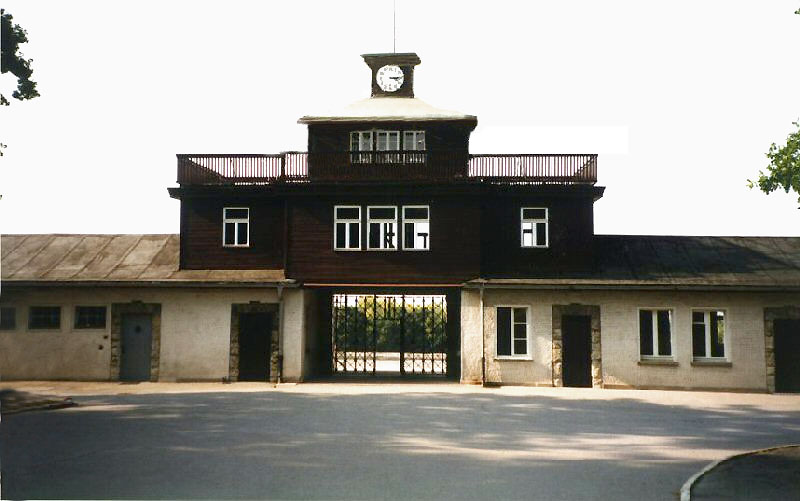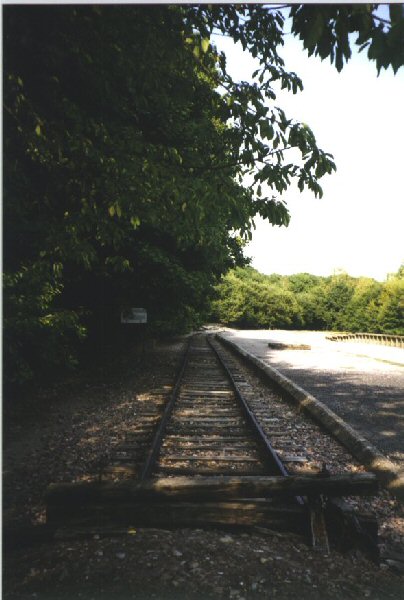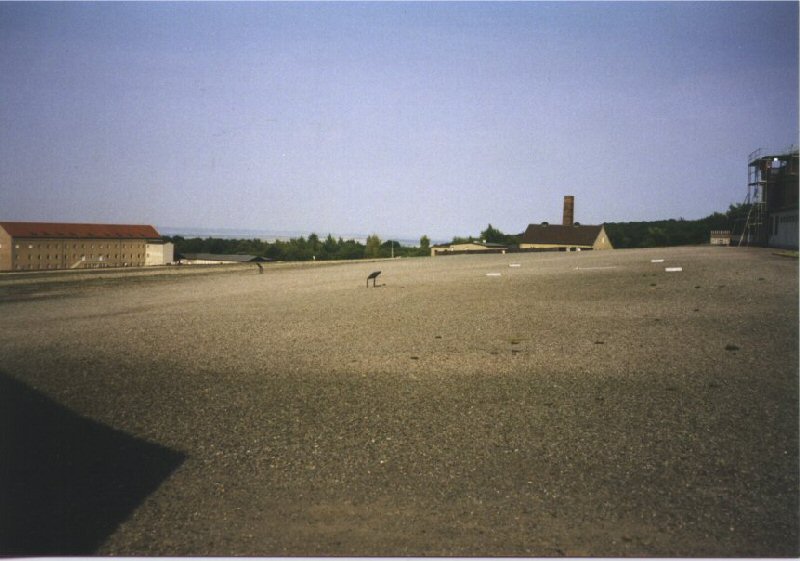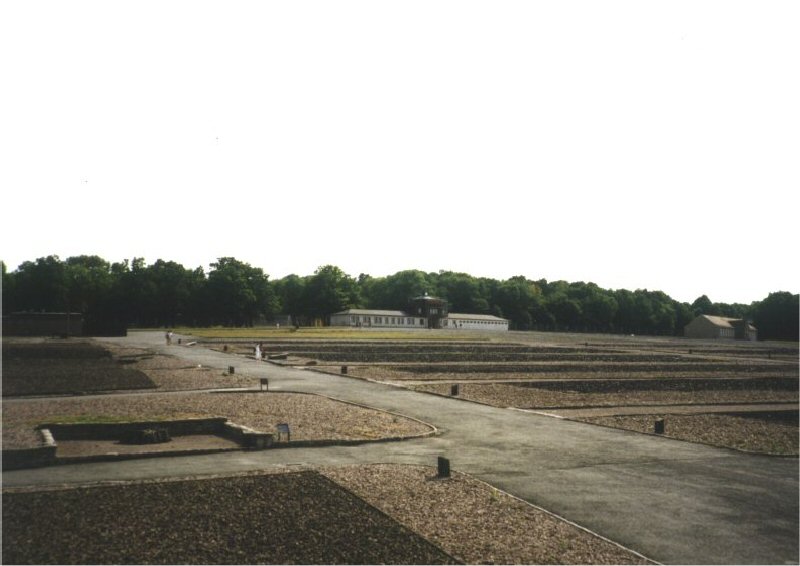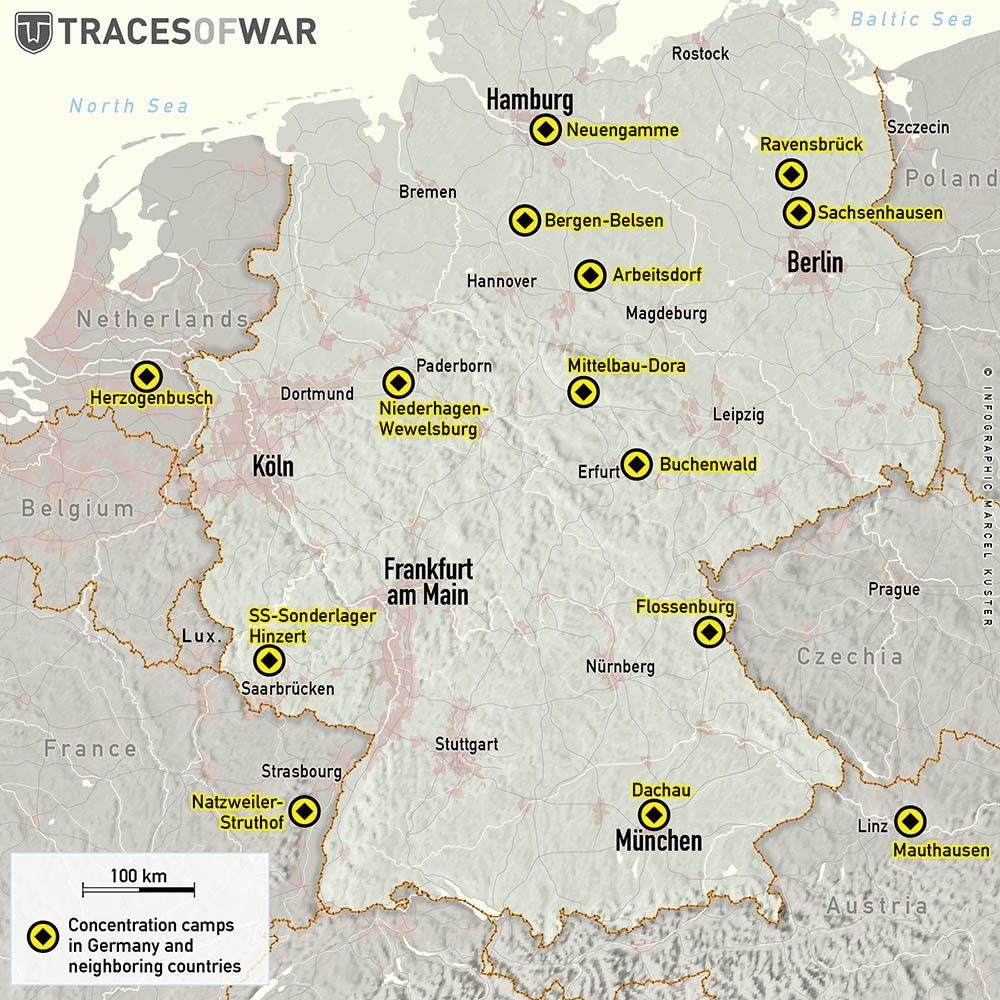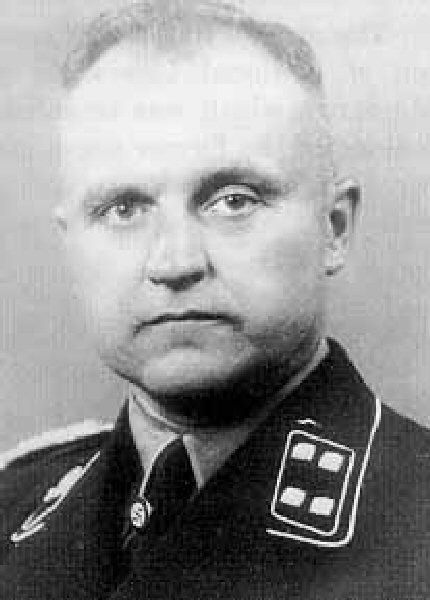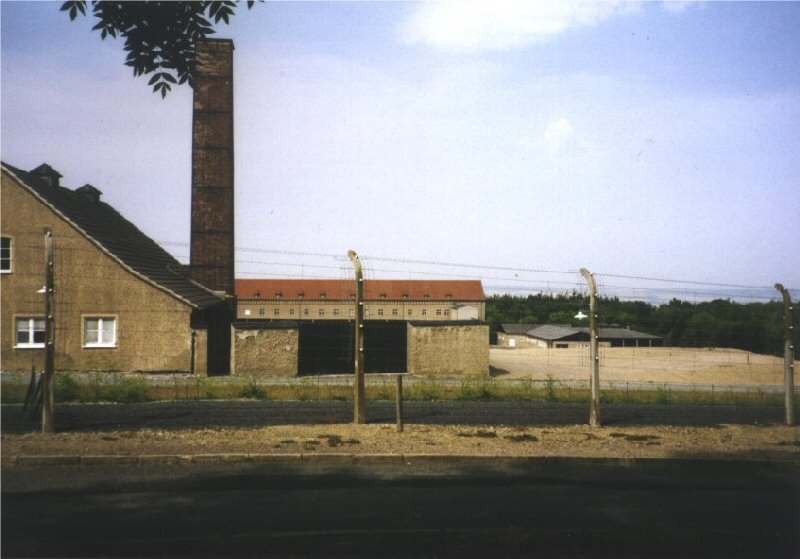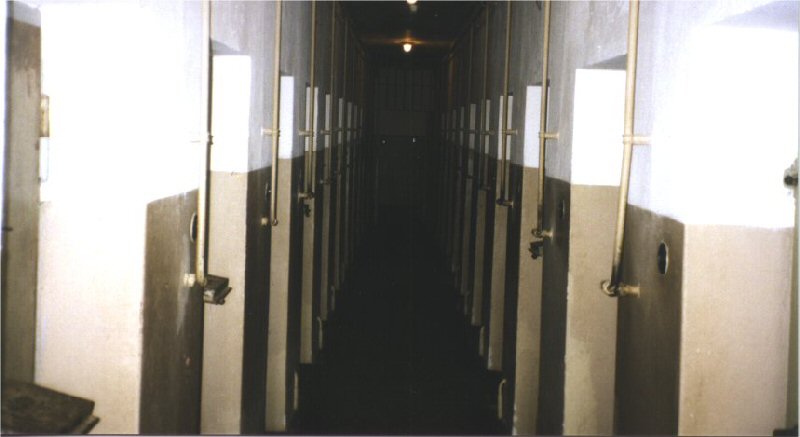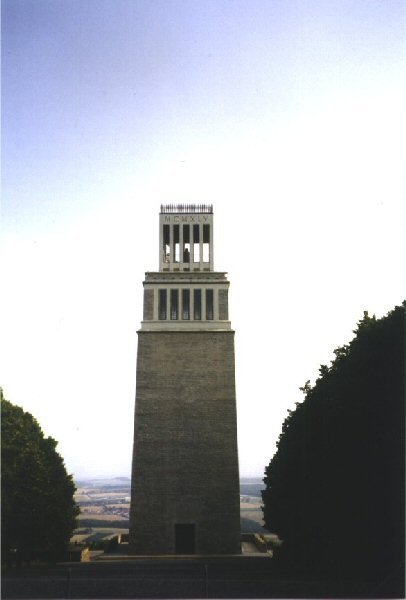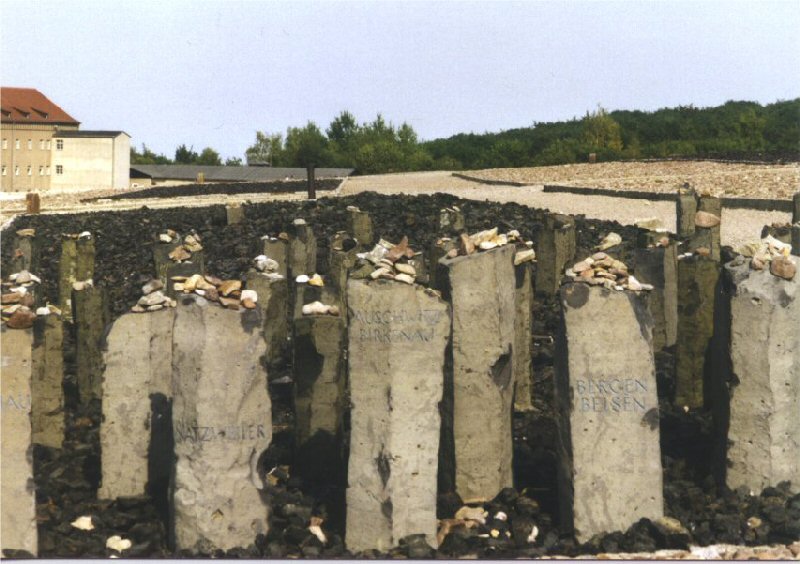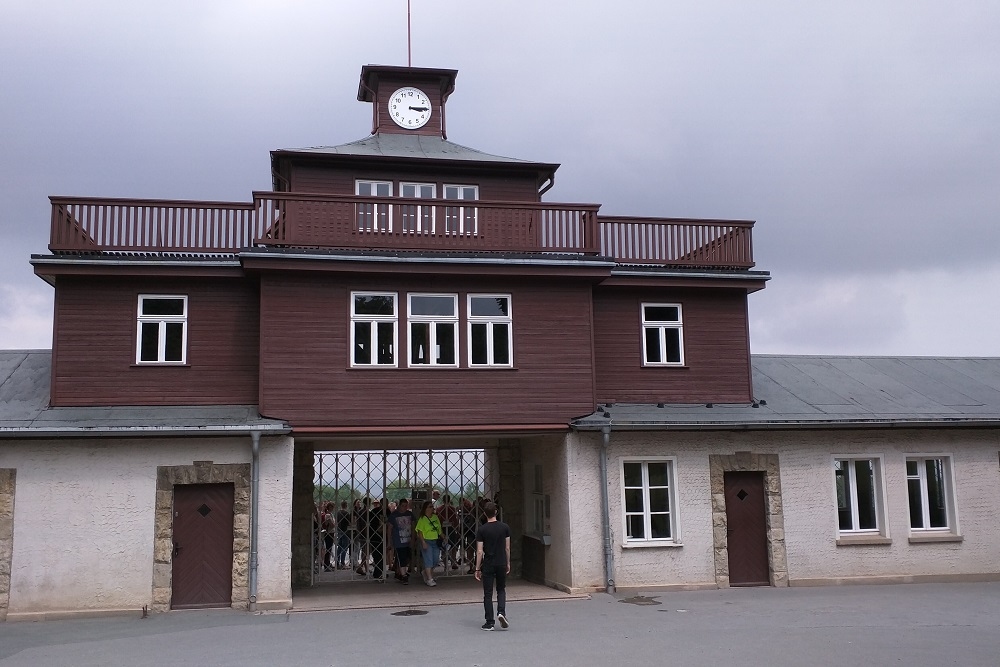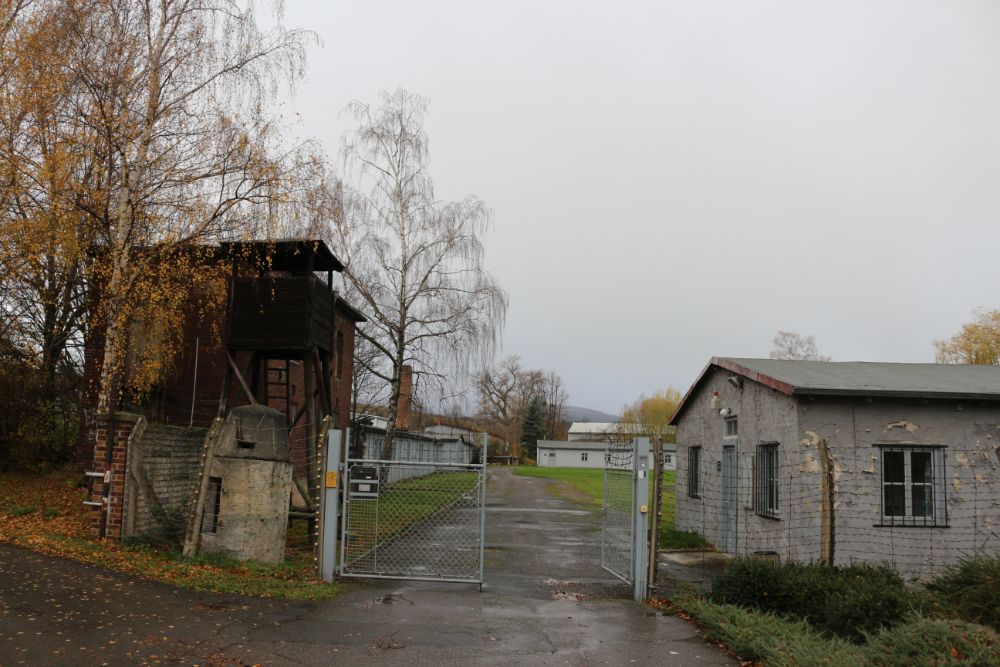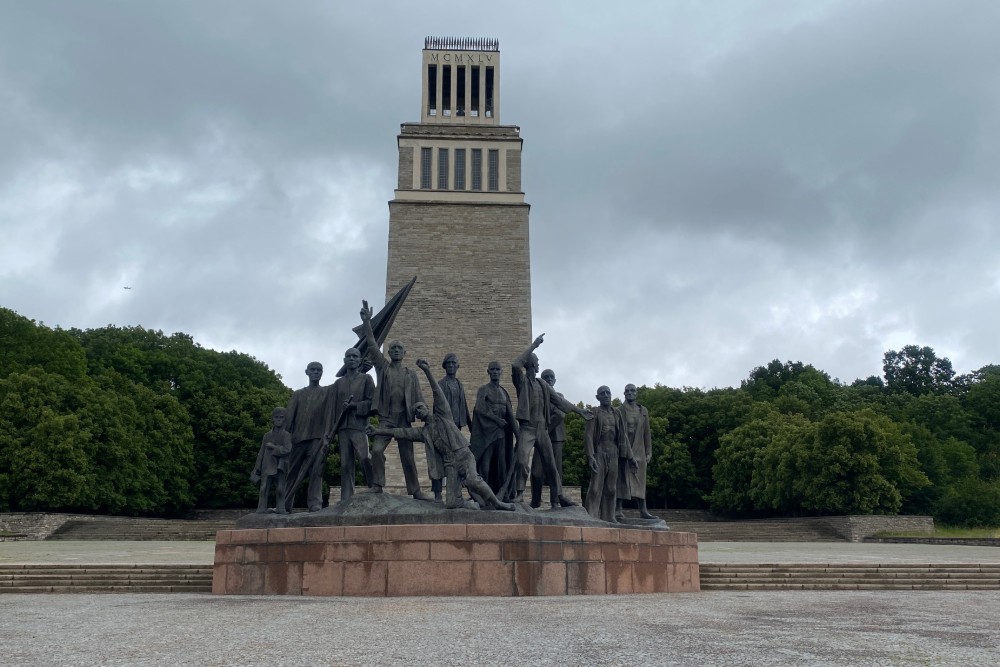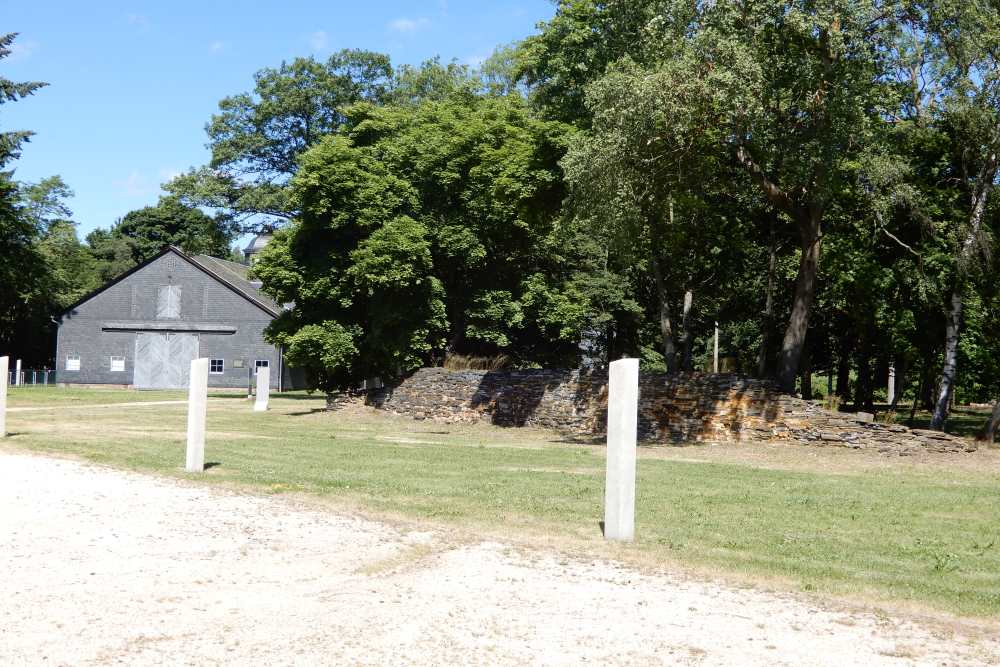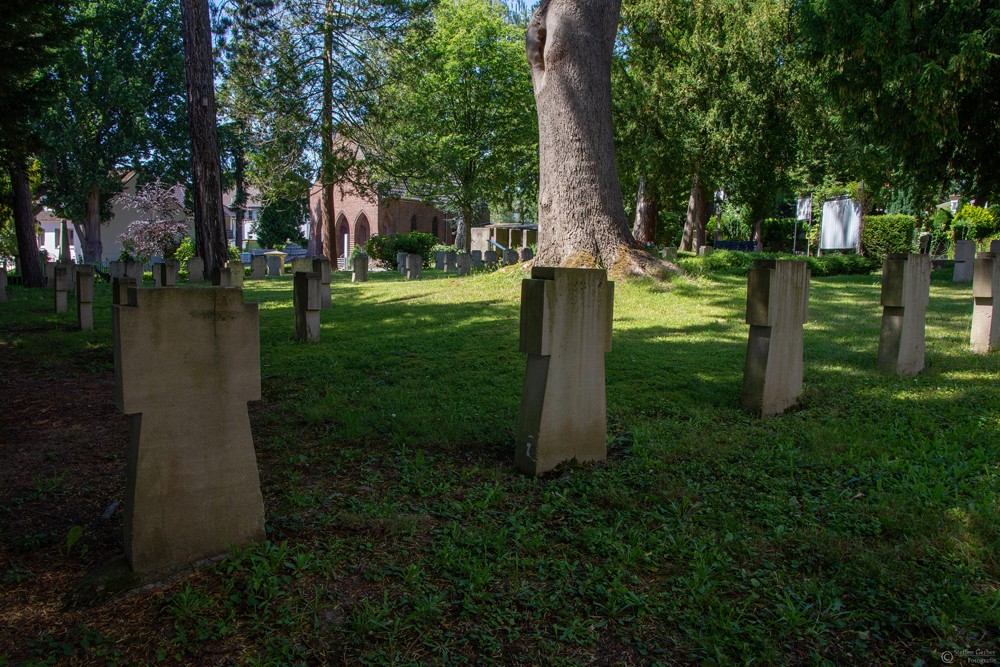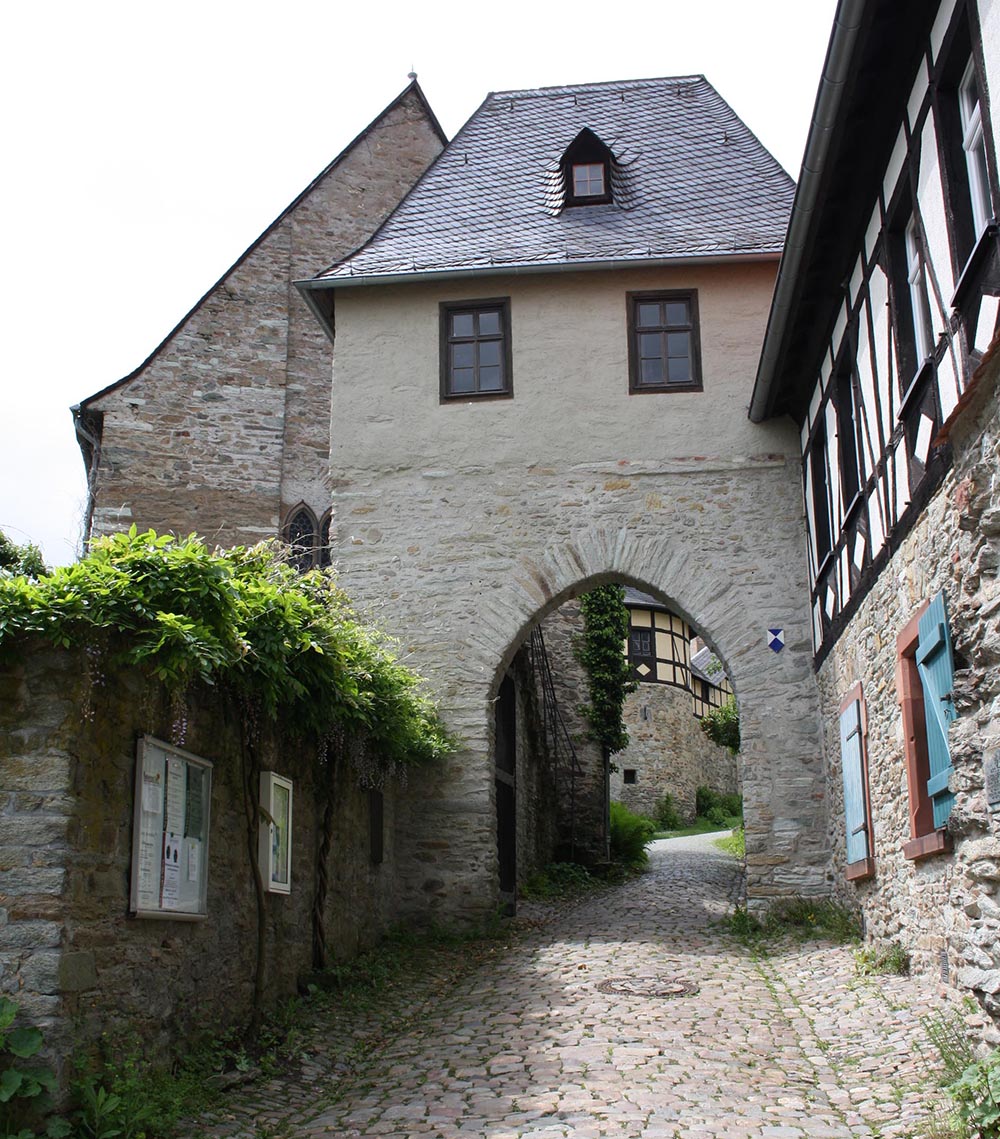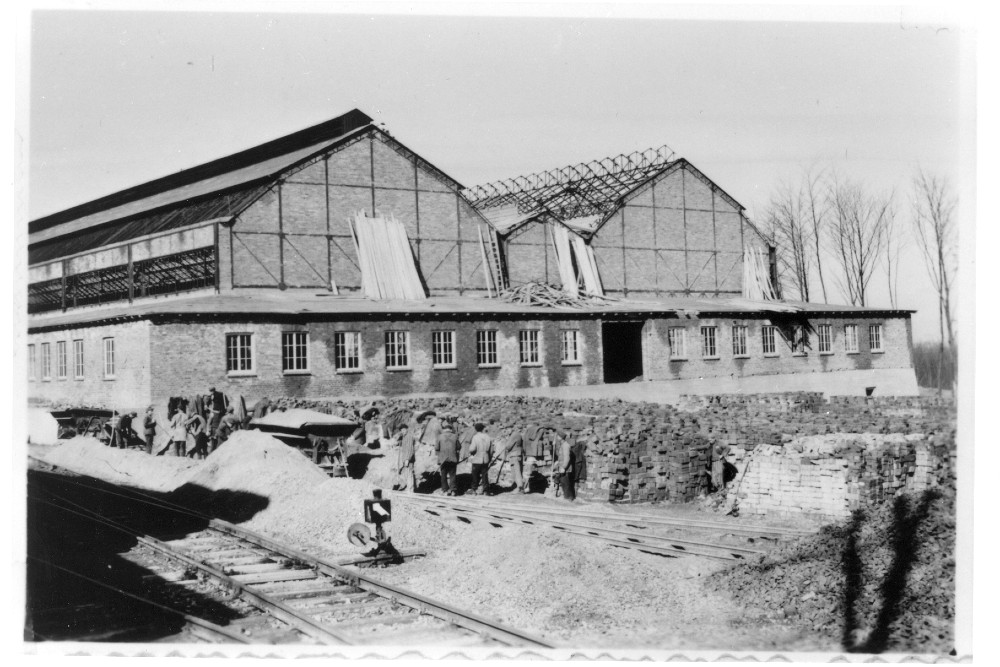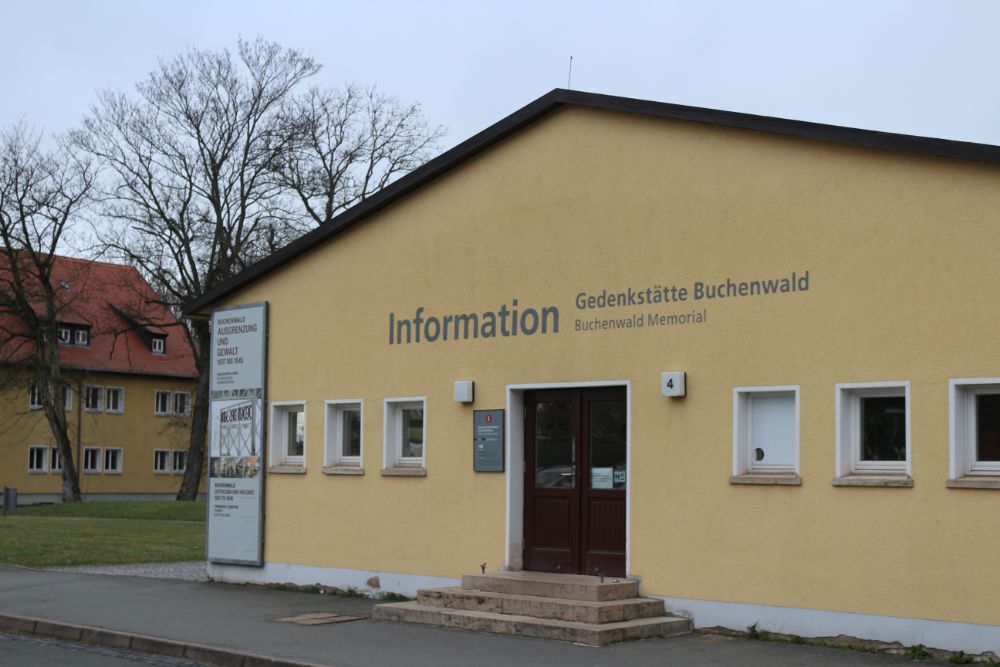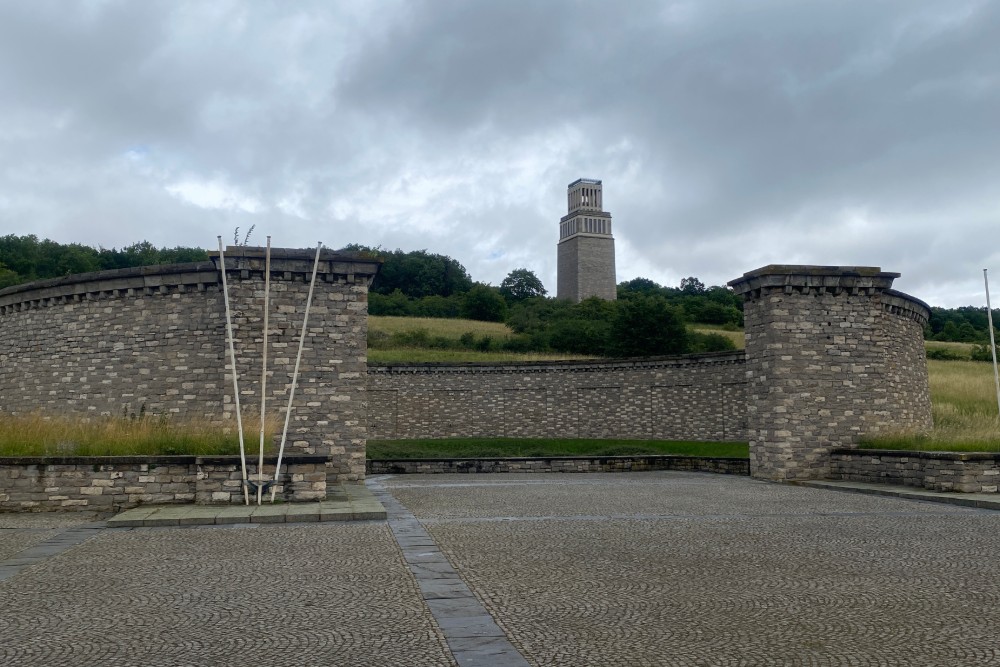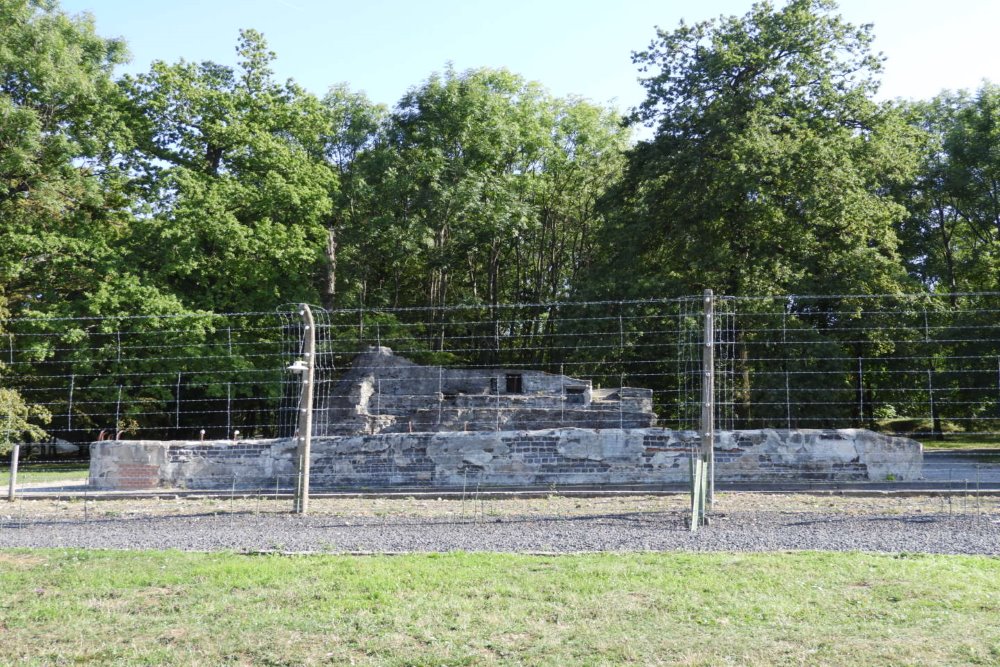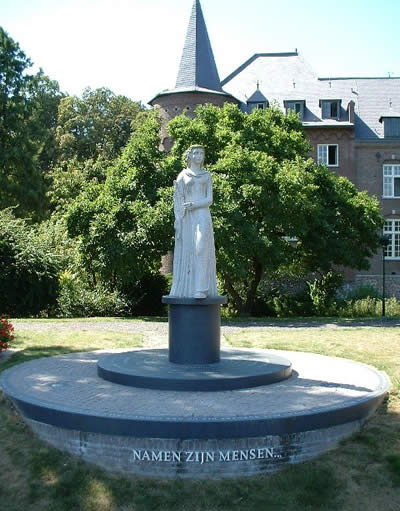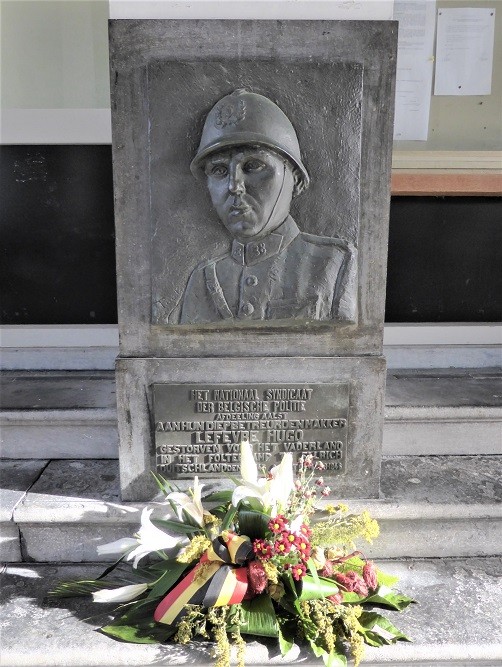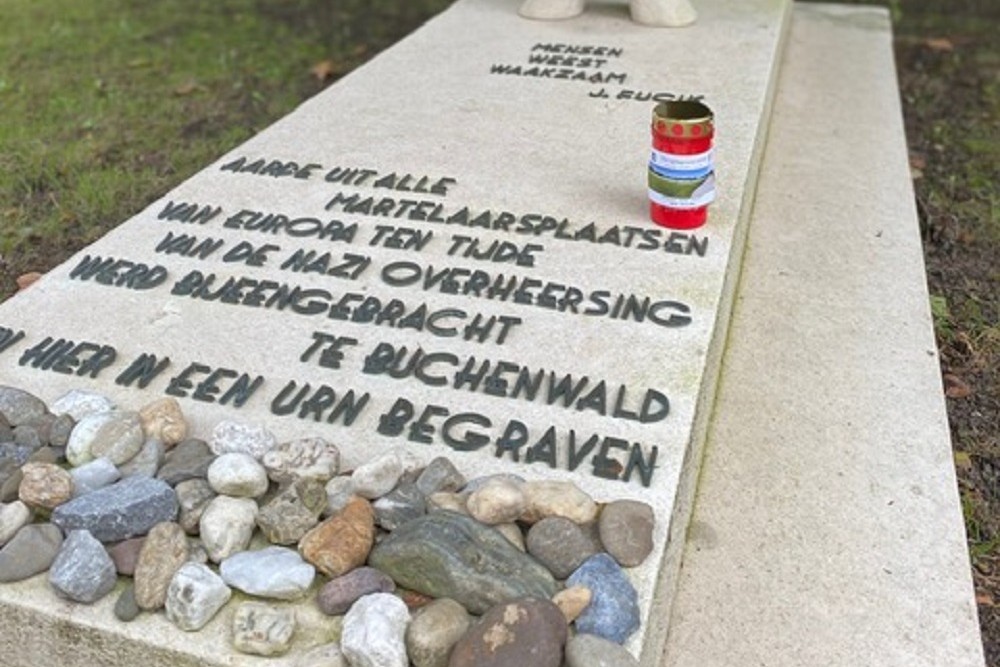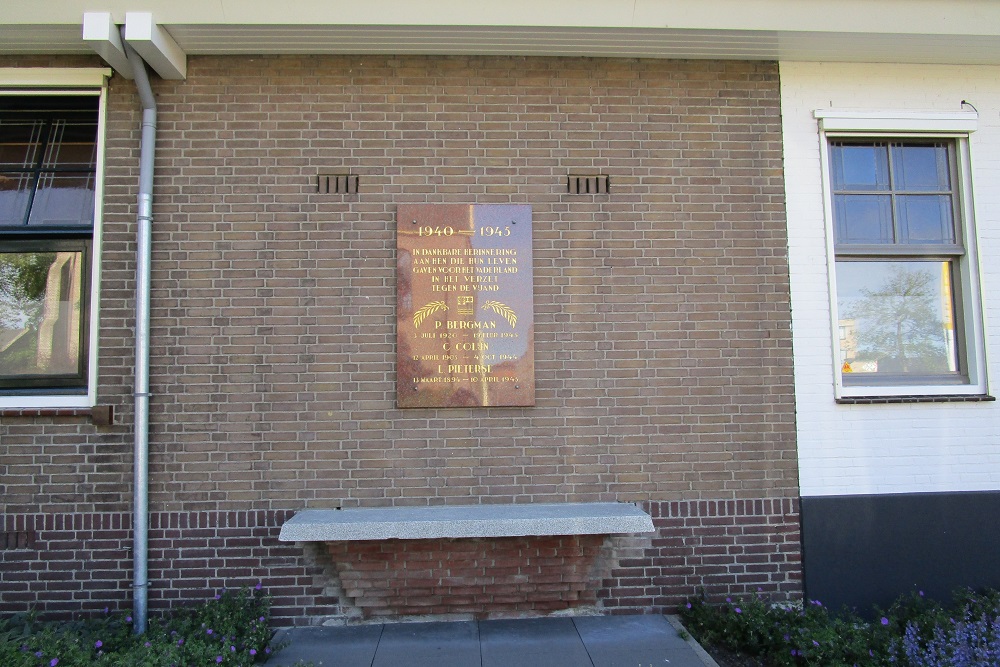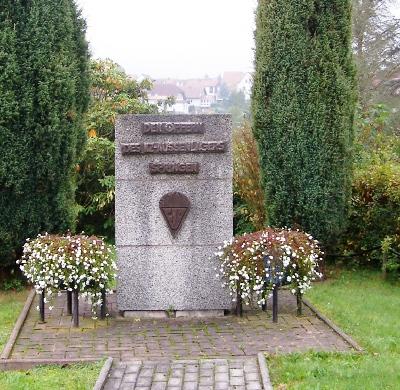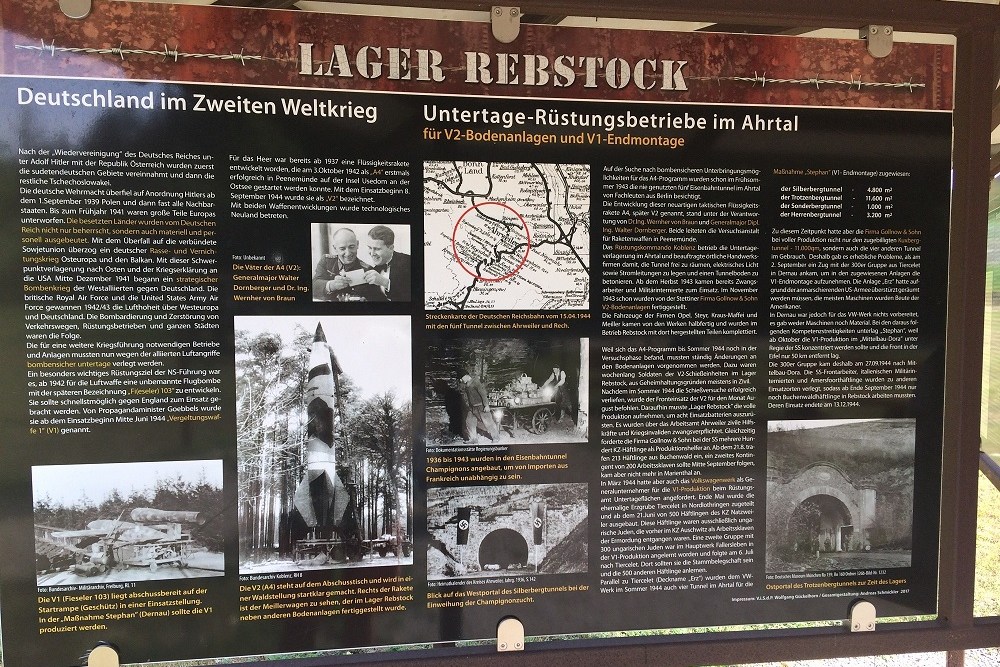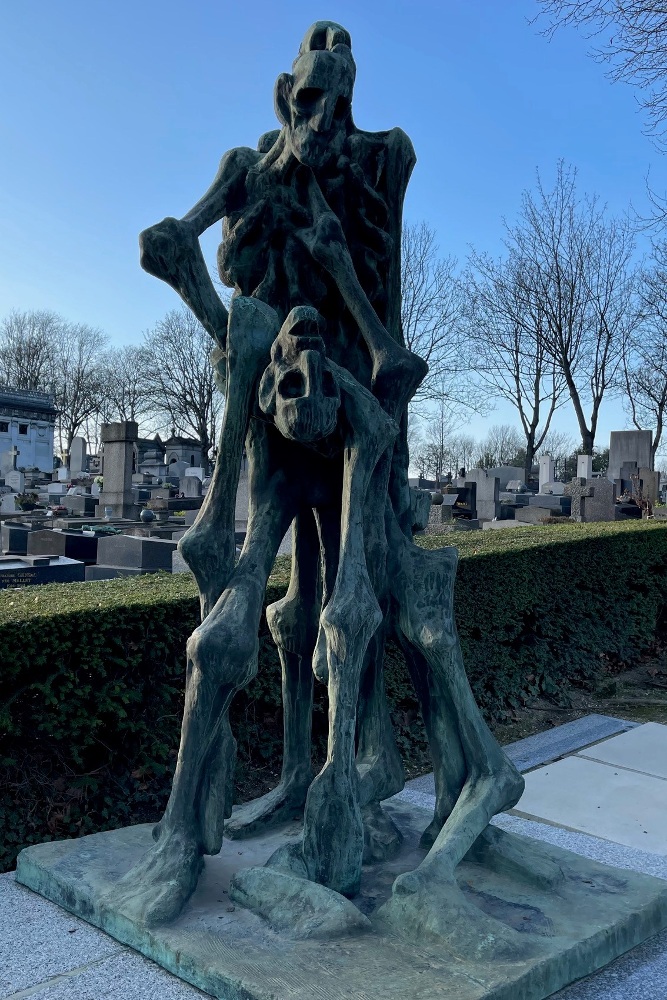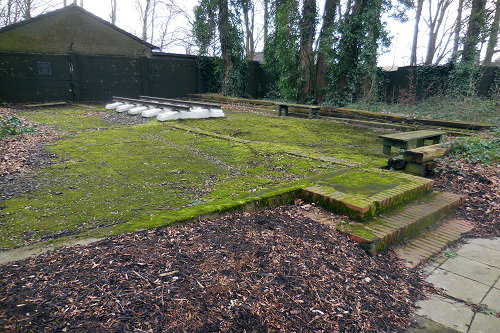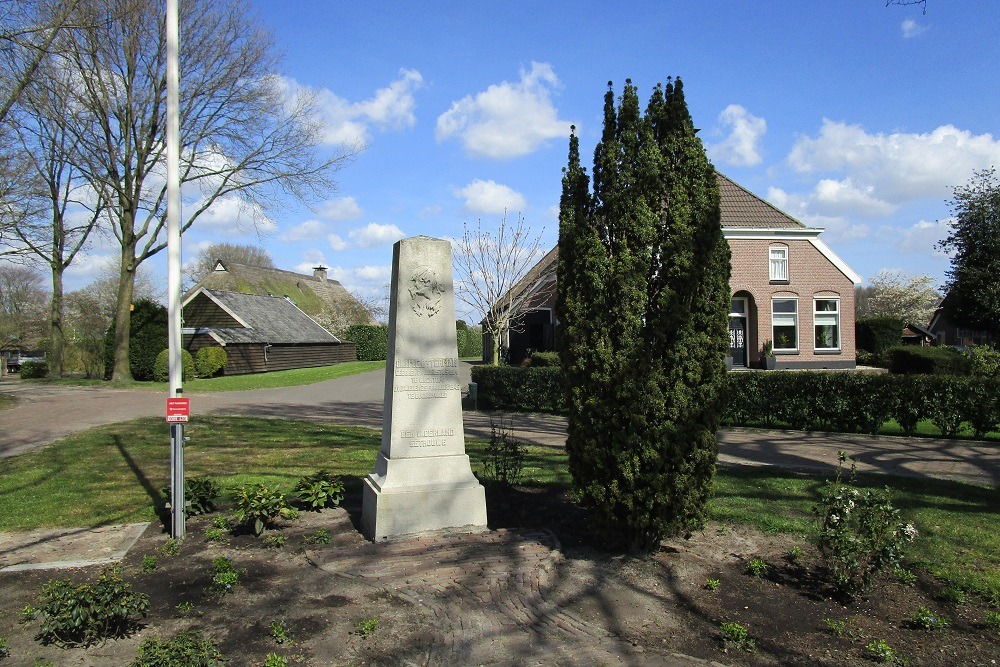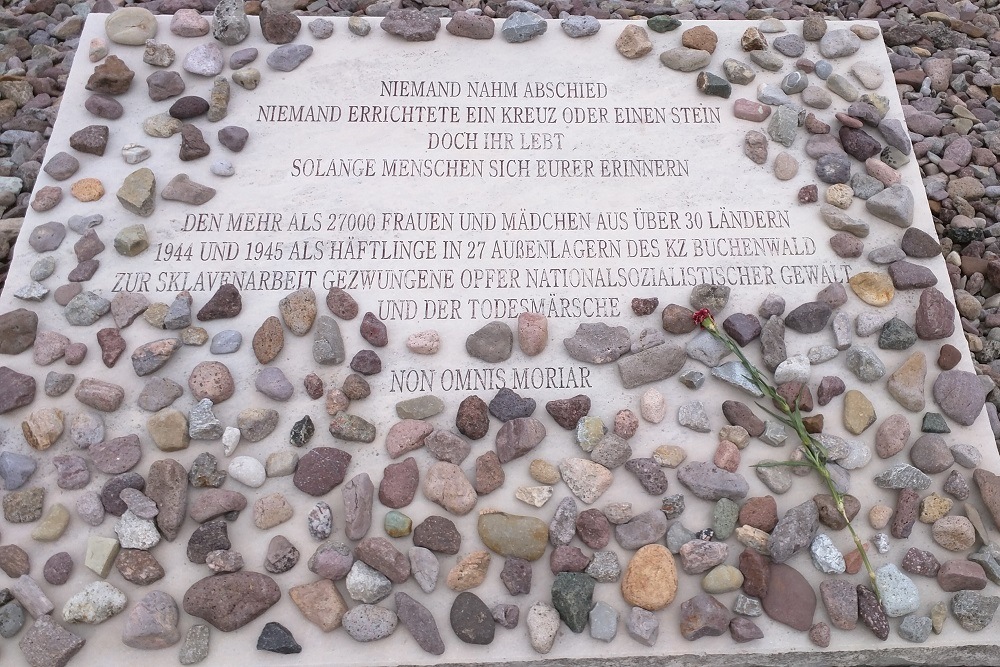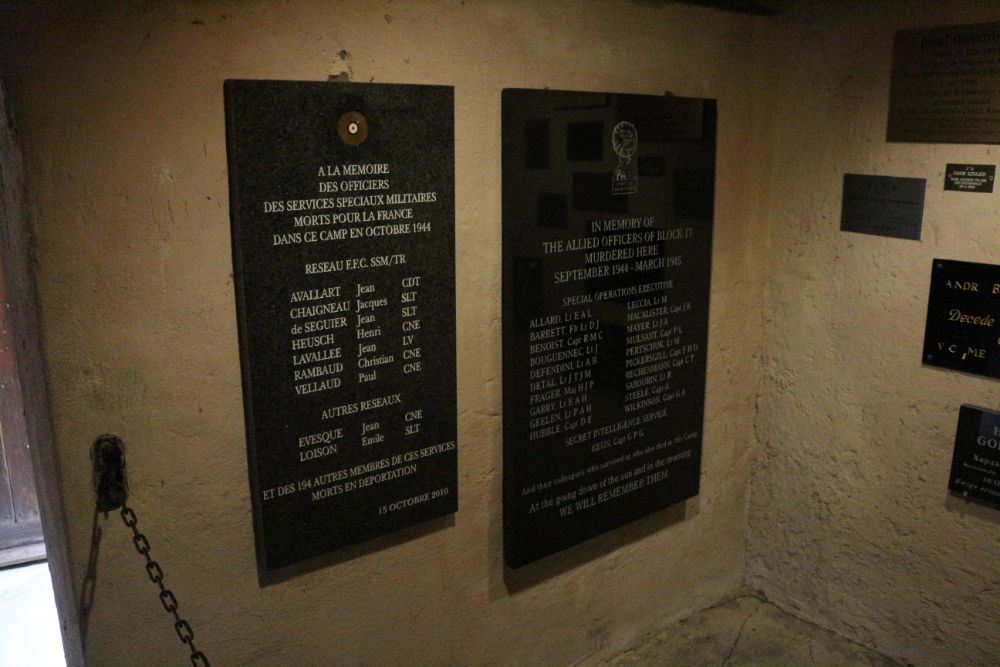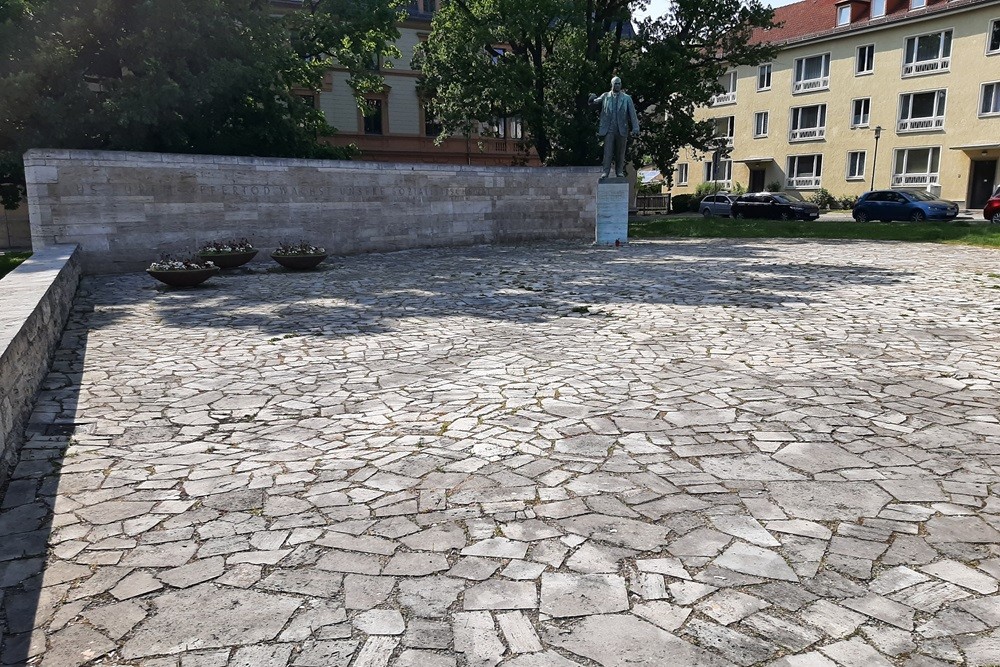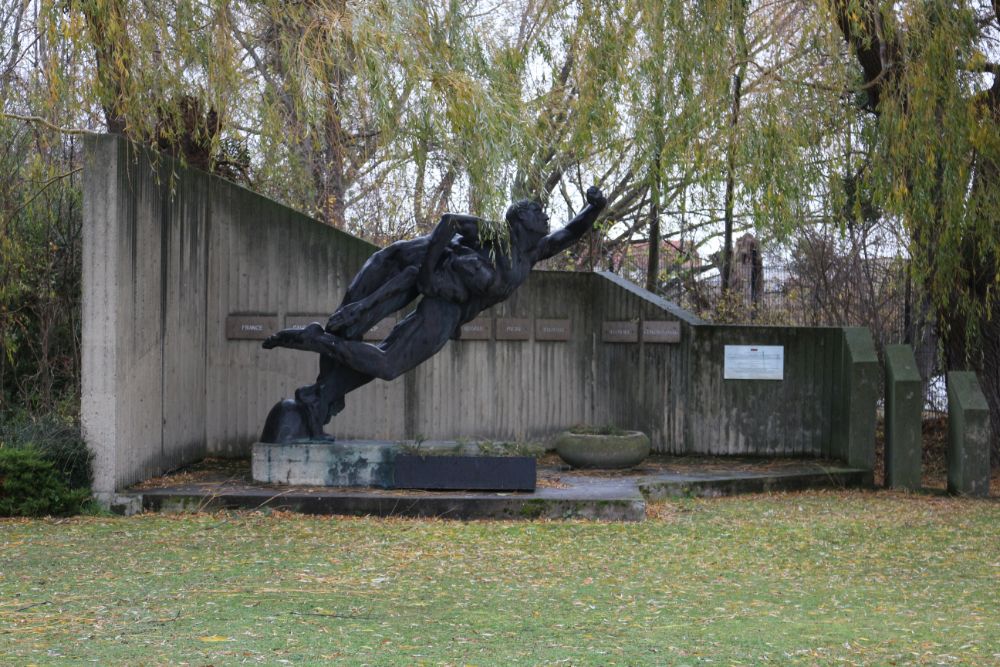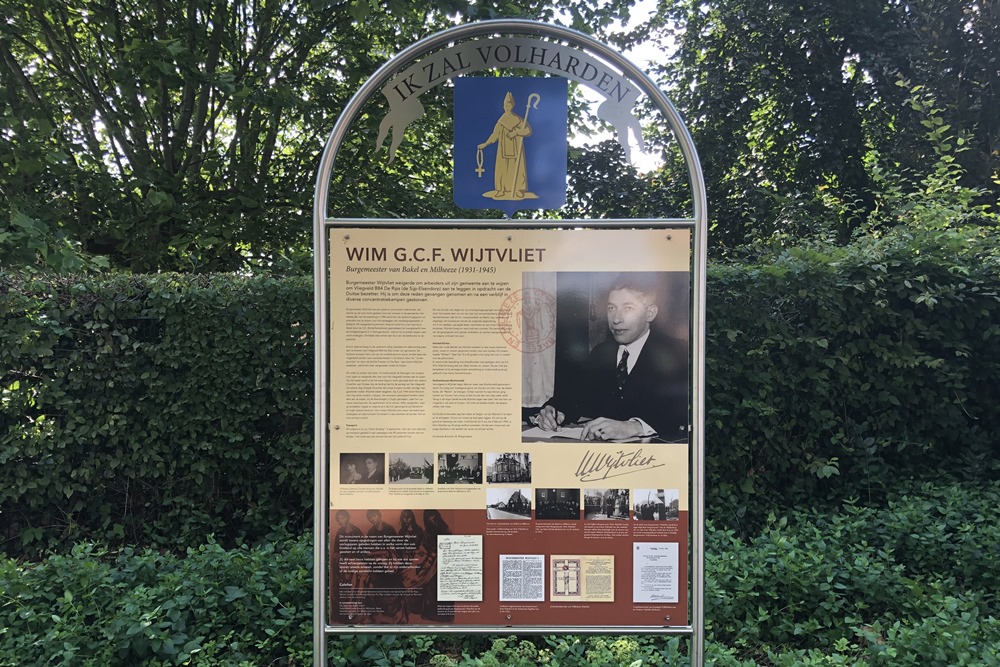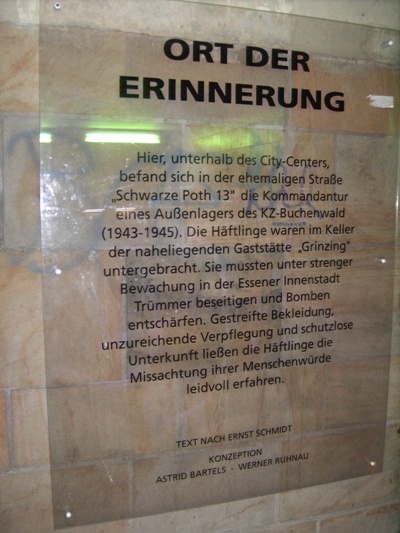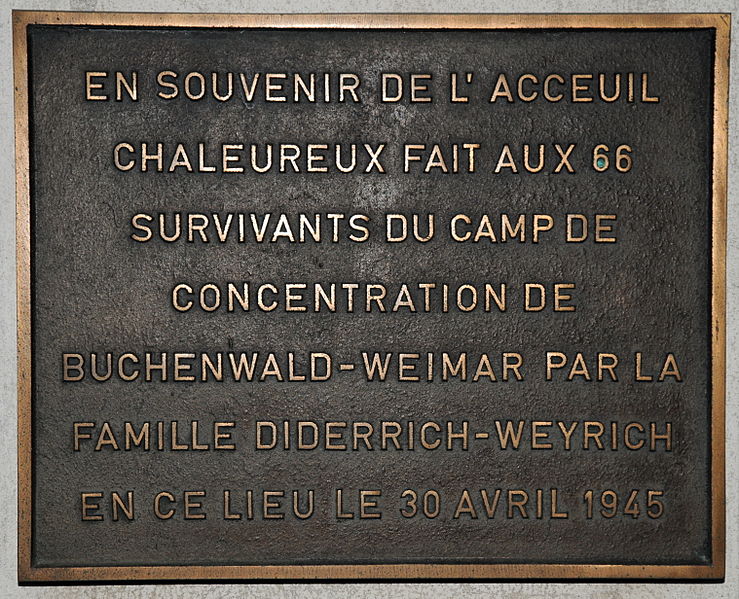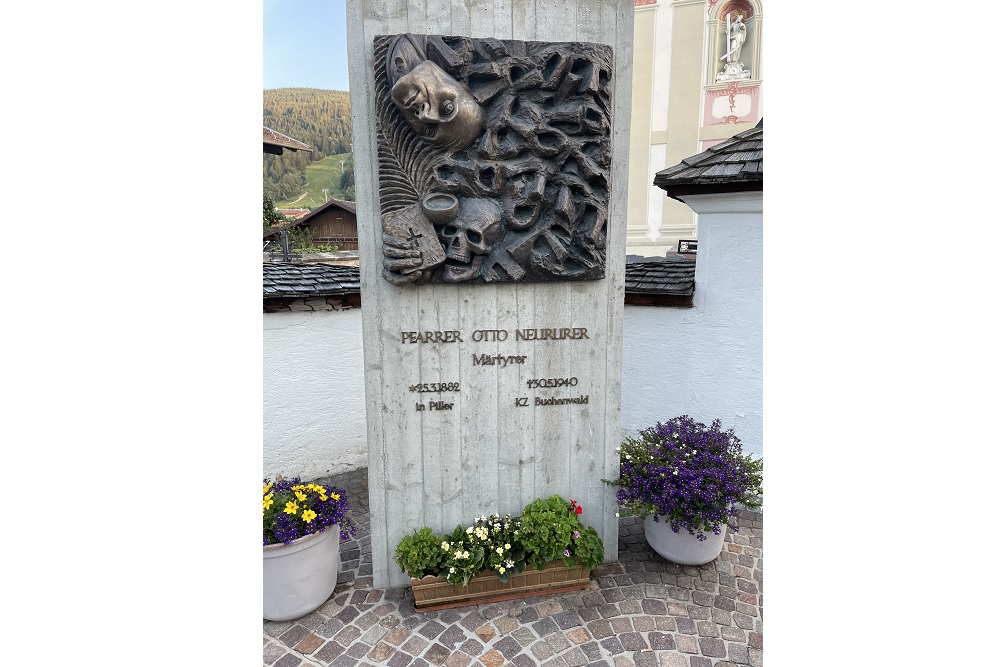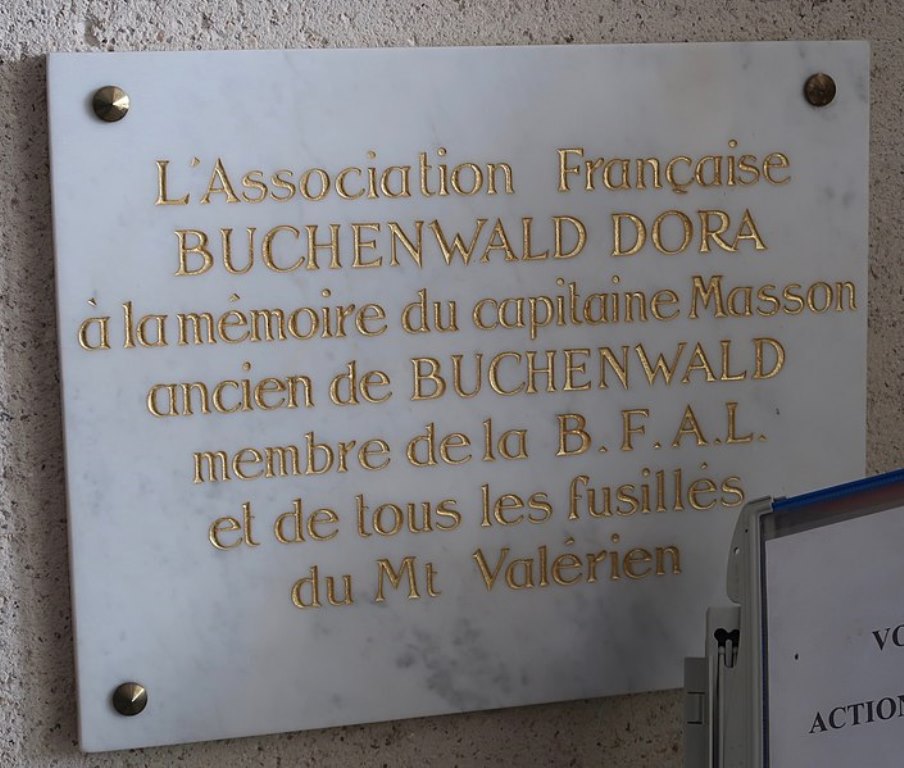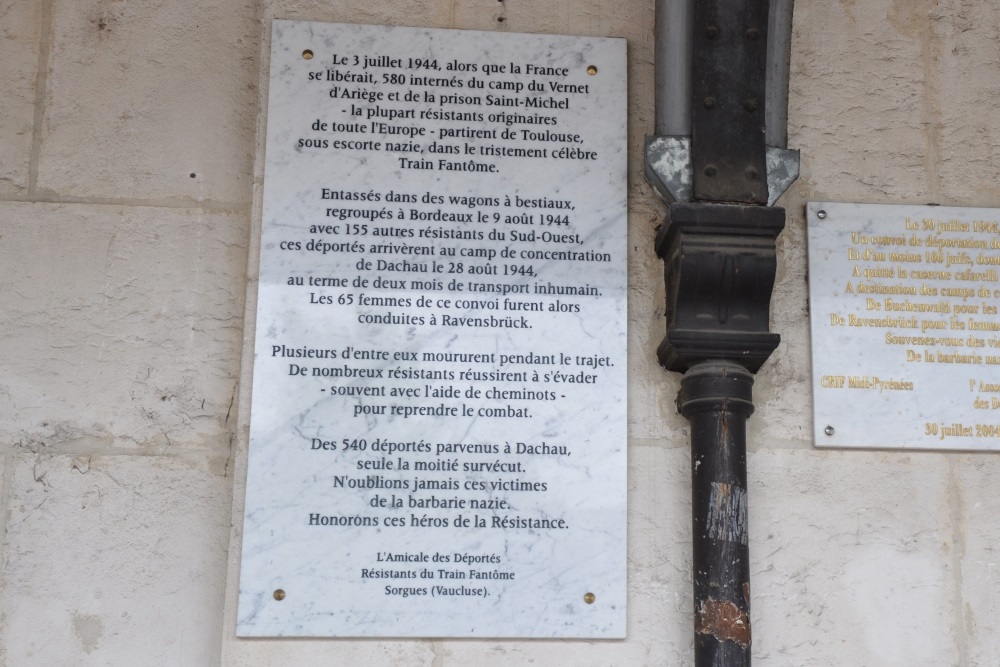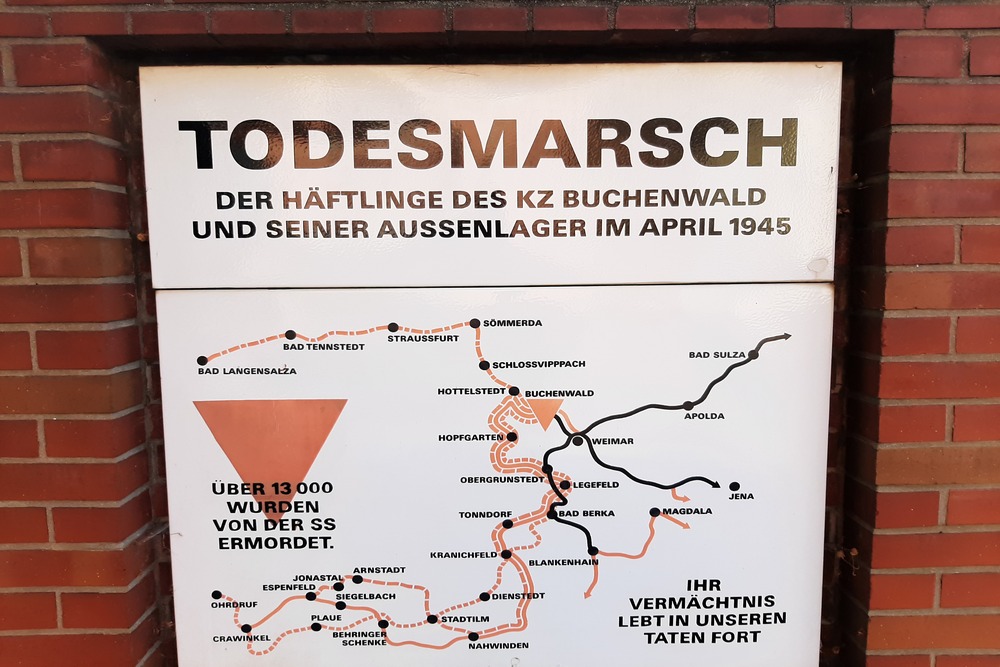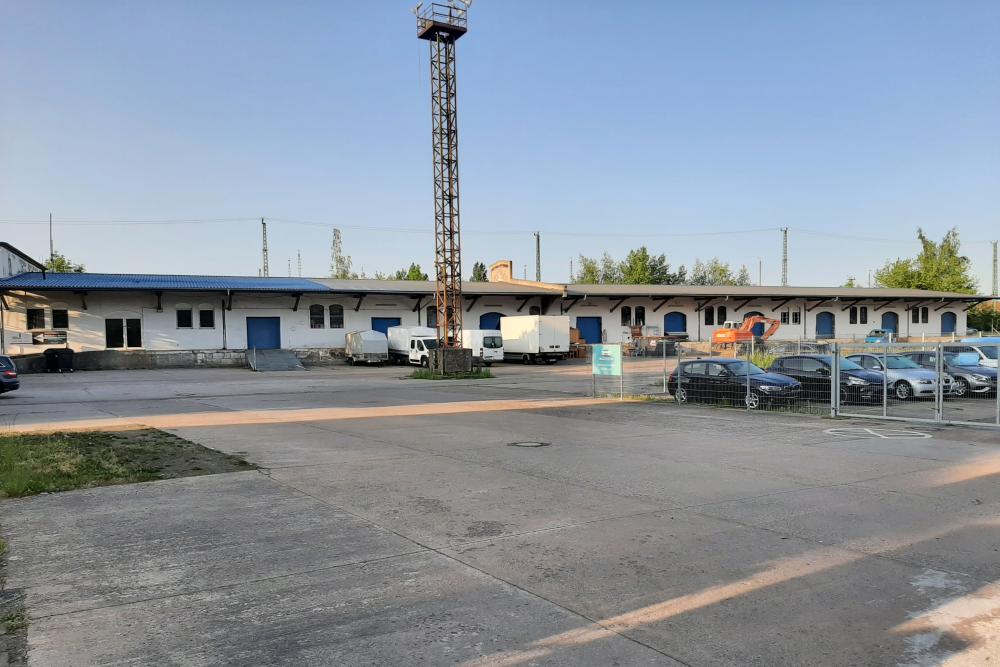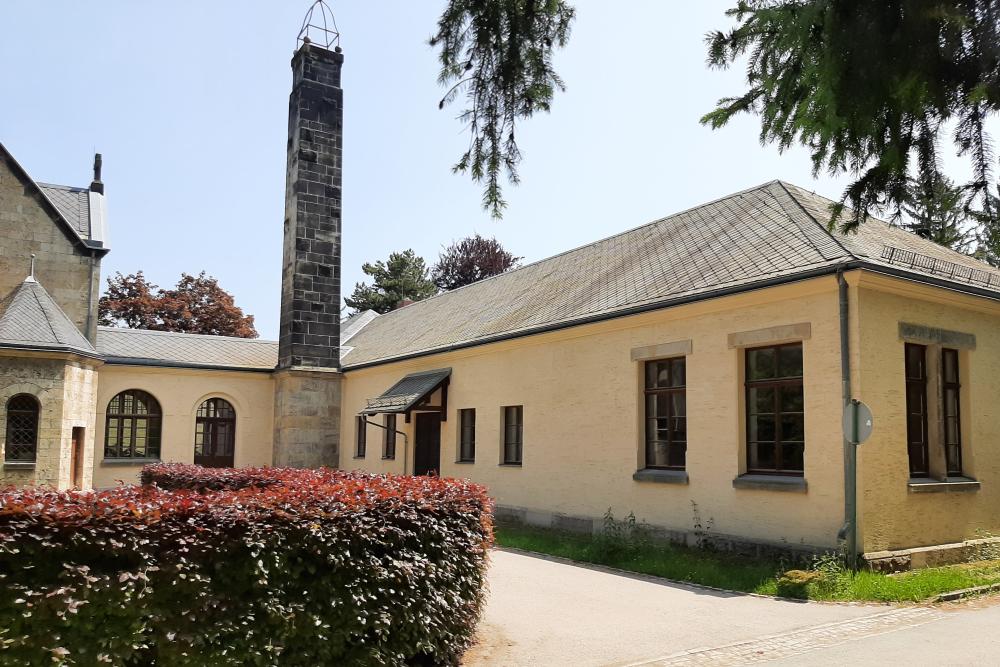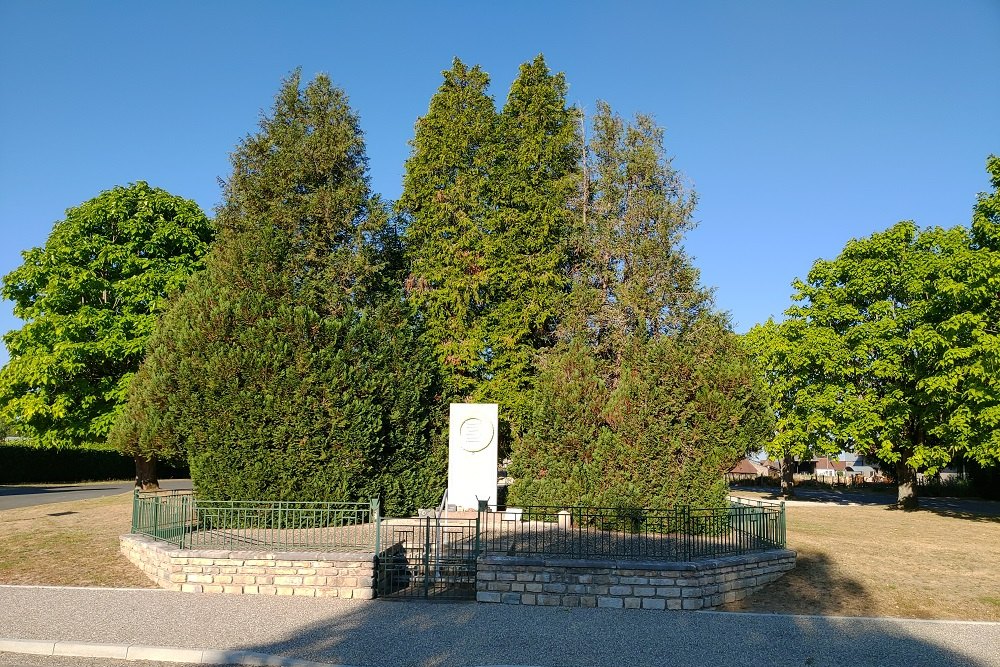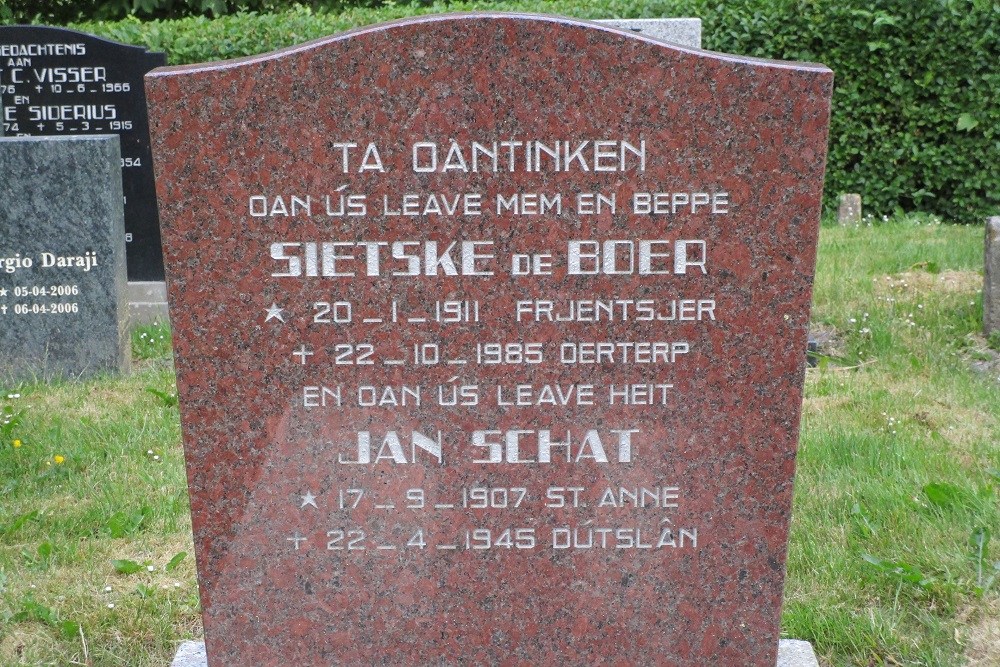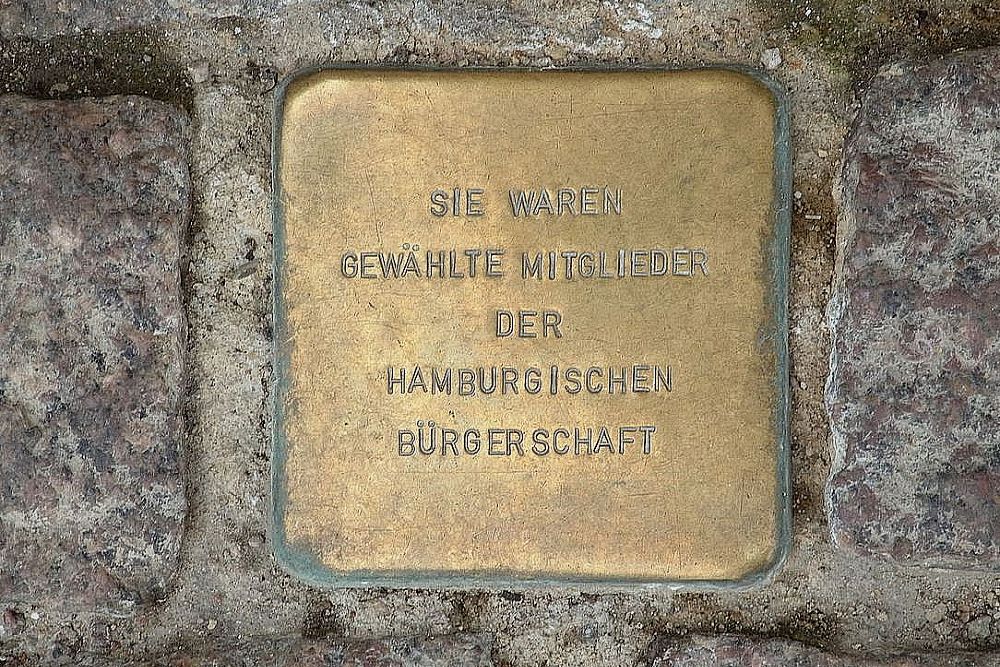Life in Buchenwald
The beginning
Weimar, summer 1937, a pretty, picturesque town in Thüringen. The town where people such as Goethe, Schiller. Liszt and Bach have spent a considerable part of their lives.
Three miles away lies Ettersberg, where one of the first Nazi concentration camps was established. On July 16, 1937 the first batch of 300 prisoners arrived in Konzentrationslager Ettersberg, from August 6, 1937 onwards better known as concentration camp Buchenwald. Initially, it was intended for political opponents of the Nazi regime, hardened criminals, anti-socials, Jehovah witnesses, Jews etc.
From September 1939 onwards, people from all over Europe were incarcerated in Buchenwald. It was no dedicated extermination camp like Camp Auschwitz but by selecting inmates for the extermination camps it was part of the Nazi extermination machinery. Another murder method was put into practice: "Vernichtung durch Arbeit" or death by work. And hard work had to be done: for hours on end without sufficient food, hygienic, clothing. The camp was constructed entirely by inmates. They felled the trees, cut stones from a stone quarry, erected the barbed wire fences, built the barracks. Many perished from exhaustion.
The camp was situated on top of the Ettersberg, in the middle of the forest. To ease access, a long road was constructed from the foot of the mountain to the gate of the camp (with the sign "Jedem das Seine" (to everyone his own) over it). This road, called the Blutstraße or blood road was constructed in a stiff pace and claimed thousands of lives. A stretch of the road is still in its original state in memory of the many dead. The road from the railway station to the gate of the camp was called the Caracho road. This Russian word simply means "good" but it was interpreted in various other ways. When the SS men called out: "Caracho!", the inmates had to run along this road on the double, spurred on by rifle butts, boots and dogs. Whoever trailed too far behind or fell down was killed mercilessly. Those "lucky" enough were shot, most of them were kicked to death.
Ever more prisoners flowed in. At the end of September, their number stood at 3,634. On December 17, 1943, the camp housed 37,319 prisoners, in December 1944 the number had risen to 63,048 and at the end of March it reached 80,436. A total of 56,545 Schutzhäftlinge (person in preventive detention) did not survive the hell that was Buchenwald. We should add however the many thousands who were sent to other camps such as Auschwitz to be exterminated. The official number exceeds 13,000.
Camp life
Life in a concentration camp was characterized first and foremost by dehumanization. As soon as you passed the gate, you were no longer a human being. You were even lower than the swine. The camp staff took away your personal clothing, henceforth, you would be walking around, like all the others, in some zebra-striped uniform. You were shorn bald and above all, you were given a number. You no longer had a name but a number. This method was applied in all camps; it was a good method to soothe the conscience of the guards. They weren’t dealing with people, they dealt with numbers. They killed the nameless who were not worthy of living. No one, not even the most hardened SS man liked to be tackled on the vast suffering in a concentration camp. You put your life at risk by looking a guard straight in the eye. You were never to penetrate that invisible barrier between the suffering of the inmates and the personal sphere of the guards.
The guards attempted to undermine the camaraderie among the inmates as much as possible and enhance the mutual jealousy. Some inmates were allowed to write letters but did not receive any; other did receive letters but were not allowed to write them. Only the "lucky" very few enjoyed both privileges, many others enjoyed none of them. Jews, Sinti and Roma were always given the hardest work and the barest minimum of food. The other inmates were strictly forbidden to help them. Whoever was caught by the SS was subjected to the same regime.
Every day, the inmates rose very early. Then came "Bettenbau" , making up their beds. Each "bed", consisting of a wooden box, a straw sack and a blanket, had to be made up perfectly, if not, the entire barracks was punished. Subsequently they went, - always in double quick time – to the wash room and the common room where they changed their clothing. During roll call, the guards counted the number of prisoners. This was also the moment for punishment and executions. Often, the internees stood in cold and rain for hours for some minor transgression or just because the SS guards felt like it. After morning roll call, a work day of 12 hours followed, cutting wood, cutting stones, constructing roads, erecting barracks ……… on a daily ration of a few ounces of bread and 0.5 quart of watery soup; that is if the SS felt like distributing the food. Many inmates worked in the Gustloff Werke, a weapons factory near Weimar. In 1942 a sister factory was established near the camp. Other inmates cut stones all day long in the stone quarry near the camp. Those stones were transported to the camp in enormous lorries, drawn by inmates. Meanwhile, they had to sing and the SS men called them the Singing Horses. In addition to the normal Arbeitskommandos – labor teams – there was also the Sonderkommando – special unit - : volunteers who picked up the dead and took them to crematories in Weimar, Jena and Leipzig. Buchenwald had its own crematory from the summer of 1940 onwards. In the evening, roll call was held again. The inmates had to be counted every time. If the numbers did not match, counting had to be done all over again. That way a roll call could take three to four hours with a sad peak on December 18, 1938. That roll call lasted 19 hours as three prisoners could not be found. All the time, the inmates had to remain standing, whoever dared to move was kicked and beaten, usually to their death. Whoever collapsed was not to be helped. 75 inmates did not survive that night.
Labor took a central place in camp life. One project was not yet finished when another one was already started. One of the major projects was the construction of the railway connection to Buchenwald. That was started rather late. Construction of the line Weimar to Buchenwald began as late as March 17, 1943. The railway, constructed entirely by inmates, was completed in just under four months: the first batch of new victims arrived by train on June 21, 1943. In order to accommodate the increasing number of prisoners, still more new barracks had to be built. A Sonderlager – special camp – was also built for the first Poles. Less than half of the 3,000 men survived this Lager. Early 1940, construction of the new crematory was started. Later on, a quarantine camp, a prisoners’ mess and a special camp for Soviet prisoners-of-war were also built. All this was constructed by the inmates themselves, always in a murderous pace and claiming many lives.
Famine was epidemic. No one had to eat or drink enough. The SS men often made up reasons not to distribute food. Camp commander Koch decided regularly that the food rations for the Jews were to go to the swine. Soup cauldrons were kicked over which continually caused fights over the small chunks of potato and (often rotten) meat. The continuous shortage of even the most elementary nourishment led to a disease called Buchenwalditis. First, the inmates lost their body fat, later on their muscles until they were no more than living skeletons. Anything that was even remotely edible was eaten. Typhoid, dysentery, scabies and other diseases were the order of the day. In order to obtain extra rations, the inmates were very resourceful. For instance, two prisoners dragged a corpse along for an extra ration of bread. Whoever was caught – which happened often – was sentenced to a few days without any food at all, in the best of cases.
The internees themselves saw various stages in the decay and exhaustion. A Muselmann was a prisoner who displayed the first signs of deadly apathy (an unstable gait, an absent gaze). The Lunatik (Polish for moon man) was so far gone he did not recognize anyone anymore and wandered about the camp like a zombie. This situation lasted two to three days and would inevitably be followed by death.
Definitielijst
- Buchenwald
- Concentration camp established in 1937 near the city of Weimar.
- concentration camp
- Closed camp where people are being held captive that are considered to be anti- social, enemies of the state, criminal or unwanted individuals. These groups mostly do not get a fair trial or are condemned to doing time in a camp.
- Jews
- Middle Eastern people with own religion that lived in Palestine. They distinguished themselves by their strong monotheism and the strict observance of the Law and tradition. During World War 2 the Jewish people were ruthlessly persecuted and annihilated by the German Nazis. . An estimated 6,000,000 Jews were exterminated.
- Nazi
- Abbreviation of a national socialist.
Images
Camp organization and crimes
The camp organization
The SS guards were housed in roomy, solid barracks just outside the camp perimeter. Karl Otto Koch, the camp commander who was in over all charge and his wife Ilse, better known as the Witch of Buchenwald for her sadistic ideas, lived in a luxurious villa. In February 1942, Koch was replaced by Hermann Pister, an SS man just as heartless. Koch still became commander in Camp Majdanek but he was charged with corruption and fraud in 1943 and executed in April 1945.
Koch and later on Pister were masters in inventing all sorts of new bullying and punishments but did not soil their hands on the internees. To that purpose they had other SS henchmen who greedily went about their business. SS-Sturmbannführer Otto Barnewald was notorious for his cruelty but SS-Hauptscharführer Martin Sommer was possibly even worse. He was in charge of the Bunker, the camp prison. Whoever ended up there was at the mercy of Sommer. He killed dozens of prisoners with his own hands. One of his favorite "games" was pole hanging: the hands of the victim were bound behind his back and then he was hoisted up by his hands. This caused complete dislocation of the shoulders so they could hardly use their arms for days on end. Those who survived had to return to work the next day as usual. Many of them were shot as they were slackers, according to the guards. Another method of torture was "krumschließen": the prisoner was bent backwards so his wrists could be tied to his ankles and his body took the form of a circle. Subsequently Sommer kicked them on until they gave no signs of life anymore.
The day to day internal running of the camp was left to the inmates themselves, in particular to the most criminal. In a concentration camp, the Nazis distinguished between various sorts of prisoners. Criminals who usually had done their time but were too dangerous to be set free were given a green triangle on their sleeves. The Grüne (green) – or in Polish zielony – often cooperated with the guards and received various functions in the camp in return such as Lagerälteste – camp oldest. He literally was the oldest in the camp and chairman of the Blockältesten. He was responsible for the internal order. In the absence of the SS-Führer, he acted as his deputy. The Lagerälteste, usually a criminal of the worst kind, was a confidant of the SS. His subordinates were the Blockälteste – barracks oldest -: being the right hand men of the SS-Blockführer, they were in charge of a specific section or Block in the camp. The next step down were the Stube-älteste and his assistants, the Stube-dienst – who were co responsible for food distribution and hygienics in individual barracks. To, at and from work, the kapo’s reigned supreme. They were in charge of the labor teams. These privileged jobs were usually allocated to the Grüne. In exchange for their cooperation and loyalty, they received more and better food, cigarettes and usually they escaped torture and bullying by the SS. In order to keep their jobs, they kicked and tortured at will. In Buchenwald, Otto Schuber was one of the most feared Blockälteste. He often stood beside Sommer when somebody was punished. Political prisoners – communists, trade union leaders, members of the opposition – were given a red triangle. They were strongly represented in Buchenwald. Well known labor leader Ernst Thälmann was executed there on August 18, 1944. Homosexuals (Arschflicker or ass fuckers) were given a pink triangle. A black triangle was reserved for the anti-socials. Jews of course could be identified by their yellow star. Scholars of the Bible such as the Jehovah witnesses wore a purple triangle. Those who had a Fluchtpunkt over his triangle had made an attempt at escape. Later on, escaped prisoners who had been recaptured were executed immediately. SS guards even got a few days leave when they had shot an escaping prisoner.
The crimes
As already mentioned, Buchenwald was not a camp where systematic genocide took place. Yet, prisoners-of-war have been killed on a large scale. From October 1941 onwards, the SS started a systematic extermination of Soviet prisoners-of-war. An old horse stable was converted to a real murder factory. In a room which served as a "medical cabinet", SS men disguised as physicians "examined" the Soviets. They were to stand on a measuring device. There was a hole in the wall behind them, level with their necks through which the unsuspecting prisoners were shot. At the same time a radio was playing full blast so the other Soviets, awaiting their turn in an adjacent room, had no idea what was going on. That way, SS-Kommando 99 executed 8.483 Soviets.
The SS guards had a number of favorite "games" such as "mountain climbing": the inmate had to climb up the steep wall of the quarry. Most of them fell down sooner or later. Whoever made it to the top unexpectedly, was kicked down again by the guards. SS-Oberscharführer Schmidt was the most resourceful: he had the inmates play monkey, that is, he made them hang from the branches of a tree until their arms could not hold them any longer. Sometimes he forced the inmate to climb all the way to the top of a tree and then he had other inmates shake the tree until the unlucky fell down.
There was a typhoid test center in the camp. The medical department of the Waffen-SS carried out experiments on humans. In particular the Jews were the guinea pigs. They were injected with typhoid bacteria, strychnine or sometimes just air. That way, all sorts of serums, produced in the institute for typhoid serum could be tested. No one survived such an injection.
Probably the most gruesome things took place in the pathology block, the site were corpses were plundered before being taken to the crematorium. Anything even remotely valuable - like gold teeth – was taken away. This occurred in all camps. In Buchenwald – just as in Sztutowo – the tattooed skin of prisoners was also peeled off and tanned. Things like lamp shades, book covers, hand bags and wall decorations were made of these skins. Moreover, SS "scientists" used the heads of prisoners to make shrunken skulls after the method of the Jivaro Indians. Prisoners who worked in this department have testified that the SS received orders for this kind of "presents".
Definitielijst
- Buchenwald
- Concentration camp established in 1937 near the city of Weimar.
- concentration camp
- Closed camp where people are being held captive that are considered to be anti- social, enemies of the state, criminal or unwanted individuals. These groups mostly do not get a fair trial or are condemned to doing time in a camp.
- Führer
- German word for leader. During his reign of power Adolf Hitler was Führer of Nazi Germany.
- Jews
- Middle Eastern people with own religion that lived in Palestine. They distinguished themselves by their strong monotheism and the strict observance of the Law and tradition. During World War 2 the Jewish people were ruthlessly persecuted and annihilated by the German Nazis. . An estimated 6,000,000 Jews were exterminated.
- kapo
- A Kapo was a prisoner in a concentration camp in Nazi Germany during World War 2 who was assigned to supervise other prisoners. A Kapo had to supervise the work of the prisoners and was responsible for their results on behalf of the SS.
- Waffen-SS
- Name of Military section of the SS.
Images
The end
In Buchenwald, the internees had established a strong resistance movement: the International Camp Committee. Especially German Communists led by Walter Bartel were the pioneers. The members were mainly Rote – political prisoners. Initially their activities were limited to stealing all kinds of material and food from the Germans and small scale acts of sabotage. Meanwhile, the Rote attempted to oust as many Grüne from their positions as possible. Increase of their resistance organization was very gradual. Before new members were initiated, there had to be absolute certainty as to their loyalty. A traitor would spell death for the other members.
From the summer of 1943 onwards, the activities were expanded. Members of the committee, among them many Jews, started making radios. Members working in the armaments factory stole hand weapons, rifles and grenades. Even a clandestine Russian paper was published. As the organization succeeded in placing confidants in functions within the camp administration, they could hide men who had been sentenced to death or provide them with another identity.
From April 6, 1945 onwards, the ground was getting too hot for the Nazis. American troops were closing in rapidly. Evacuation of the camp was ordered. Over the next few days, over 28,000 inmates were marched or transported by train in the direction of Camp Dachau and Theresienstadt. Between 7,000 and 8,000 did not survive the death marches. Those evacuations were the signal for the resistance organizations to take action. Thanks to the key positions they had in the camp administration, they managed to delay the orders of the SS, hence the camp could not be evacuated entirely.
Towards April 11, most of the SS men had fled. The International Camp Committee did not wait for the Americans. The members took out their weapons, occupied the watch towers and overpowered a few dozen SS men. That day, 21,000 inmates were liberated, including 4,000 Jews and some thousand children and youngsters. On April 12, a general liberty roll call was held and a day later, American troops reached the camp. Ordered by the American commander General Patton, some thousand inhabitants of Weimar were obliged to come to Buchenwald to see the crimes of the Nazis.
The present
In the period between 1945 and 1950, the Buchenwald site was used by the Soviets as a detention camp. Many former members of the NSDAP or people who had collaborated with the Nazis ended up there. Just like during the Nazi terror, a lot of people had been arrested arbitrarily. In the years after the war, the camp has housed a total of some 28,000 people; over 7,000 of them did not survive. They were buried north of the camp on the so called death fields. On the spots of the anonymous mass graves, steel columns form a burial ground.
Remembrance
A visit to Buchenwald begins in Weimar. This beautiful city is undoubtedly part of the gruesome history of the camp. Until March 1943, prisoners arrived here; from that date on, Buchenwald had its own train stop. Until well into 1940, the dead from the camp were taken to the municipal crematory as the camp had no crematory of its own in the first few years. Many other elements in Weimar are reminiscent of Nazism: the Marstall, seat of the Gestapo, a garden fence in the Bauhausstraße made of fence poles from the camp, the town hall where Hitler once addressed the inhabitants.
From Weimar, the Etterbergerstraße leads to Buchenwald. Some 1.2 miles outside the city limits, the Blutstraße begins, constructed by the prisoners and for a part still in its original state. Some 1.8 miles on, stands the Mahnmal with its huge bell tower, the Street of Nations (naming all nationalities that have perished in the camp and the group of statues depicting the resistance in Buchenwald. This Mahnmal is visible from miles away and serves as a warning for what has happened here. The garages of the SS and the Gustloff Werke II were sited on the densely grown terrain in the vicinity. Next, one passes the former Buchenwald railway station where thousands of prisoners arrived after March 1943.
The stretch of road between the station and the entrance gate was and is still called the Caracho road. Here the camp guards were housed. Still visible are the gas station, the garages and the remnants of the headquarters. The parking place and the bus stop are on the former SS parade ground. Part of the barracks is now in use as cafeteria and information center.
Despite vehement protests from former inmates, the concentration camp itself has largely been torn down. The camp entrance with the Bunker, along with a number of watch towers has been preserved. The crematorium is also still standing. The former clothing depot now houses an impressive permanent exposition. All aspects of KZ Buchenwald are minutely dealt with in clear and well explanatory text. There also is an equally well stocked exposition on the Soviet prison camp. All this surely merits a visit. Entrance is free.
Definitielijst
- Buchenwald
- Concentration camp established in 1937 near the city of Weimar.
- concentration camp
- Closed camp where people are being held captive that are considered to be anti- social, enemies of the state, criminal or unwanted individuals. These groups mostly do not get a fair trial or are condemned to doing time in a camp.
- Jews
- Middle Eastern people with own religion that lived in Palestine. They distinguished themselves by their strong monotheism and the strict observance of the Law and tradition. During World War 2 the Jewish people were ruthlessly persecuted and annihilated by the German Nazis. . An estimated 6,000,000 Jews were exterminated.
- Nazi
- Abbreviation of a national socialist.
- Nazism
- Abbreviation of national socialism.
- resistance
- Resistance against the enemy. Often also with armed resources.
- Theresienstadt
- City in the Czech Republic. Here the Nazis established a model concentration camp.
Images
Information
- Article by:
- Gerd Van der Auwera
- Translated by:
- Arnold Palthe
- Published on:
- 27-09-2017
- Last edit on:
- 02-05-2020
- Feedback?
- Send it!
Related sights
Sources
- Van Eck, L. De bloedstraat: Buchenwald. Leuven, 1986.
- www.buchenwald.de
- http://thirdreichruins.com/buchenwald.htm
- Exposition concentration camp Buchenwald 1937-1945// exposition Soviet detention camp 1945 – 1950 // Beide te bezoeken te Buchenwald
